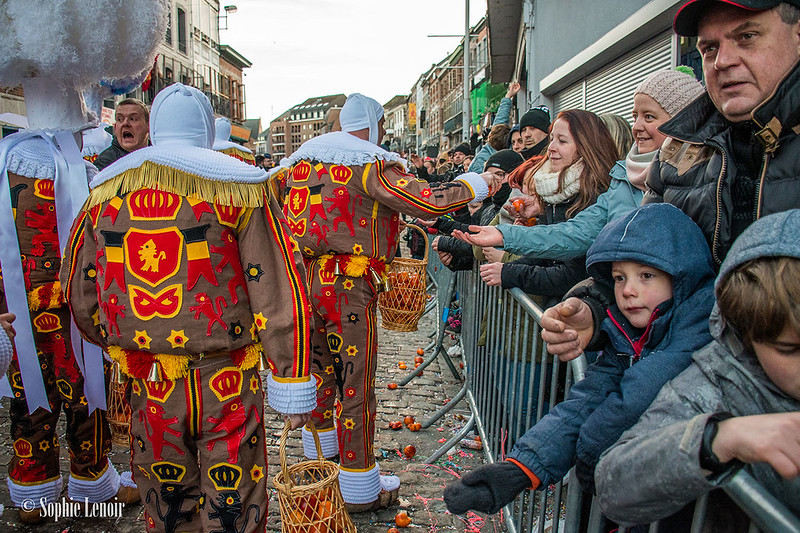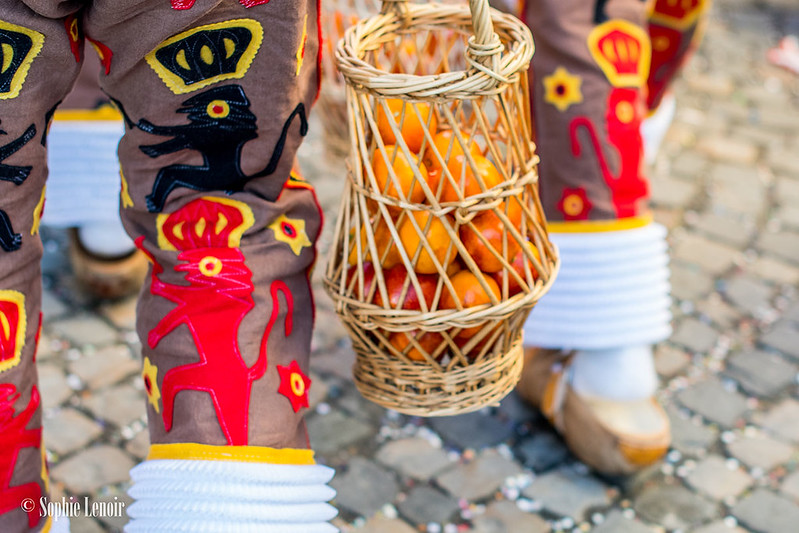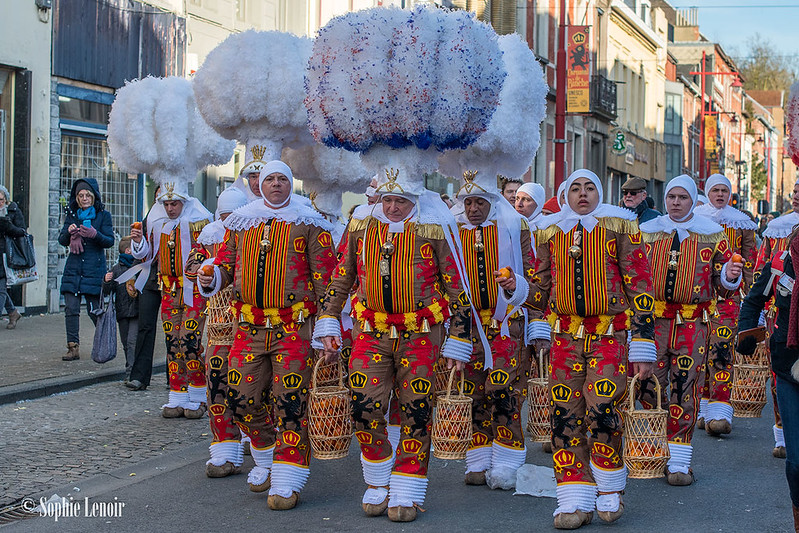Binche Carnaval
A Belgian Carnival of Tradition, Color, and Community Pride
2026/02/14 - 2026/02/16
The Binche Carnaval is Belgium’s most iconic carnival, famous for the Gilles—masked men who throw oranges into the crowd. Every February or March, the small town of Binche is enveloped in the excitement of this centuries-old festival, which is recognized by UNESCO as an Intangible Cultural Heritage. Over three spectacular days, folklore, spectacle, and local pride come together in a celebration that captivates locals and visitors alike.
The rhythmic clatter of wooden clogs on cobblestones, the sweet aroma of freshly baked waffles in the winter air—these are the sensory signatures of Binche Carnaval. The highlight is the appearance of the Gilles, dressed in elaborate costumes and wax masks, who dance to the beat of drums and toss oranges to the crowd as a ritual for good luck.
Main Attractions
Key Events
The climax of the festival is the grand Gilles parade on Shrove Tuesday. Hundreds of Gilles, adorned in vibrant costumes and ostrich feather hats, dance through the streets to the rhythm of drums. The spectacle of oranges flying through the air, the music, and the laughter create an electrifying atmosphere that sweeps everyone up in the celebration.
Costumes and Decorations
Each Gille’s costume is handmade, featuring bells, embroidery, and ostrich feather hats weighing up to 15 kilograms. The wax masks are individually crafted, lending an air of mystery and solemnity. The whole town is decorated with colorful banners and illuminations, transforming Binche into a festive stage.
Traditional Food & Drink
Festival-goers can enjoy local treats such as "Cougnou" (a sweet bread shaped like a baby), freshly baked waffles, and Belgian beer. The aroma of baked goods and warm drinks fills the winter air, adding to the joy of the festival.
Cultural and Historical Background
The history of Binche Carnaval is remarkably old, with records indicating it existed as early as the 14th century. Originally, it was part of Catholic pre-Lenten celebrations, intended to drive away winter and welcome spring and abundance. Town archives mention costumes and parades as early as 1385.
In the 16th century, under Spanish rule, masquerades and festivities were at times banned, but the townspeople preserved their traditions, adapting them through the ages. The Gilles—masked men—became a central feature from the 17th century onward, and the now-famous costumes and orange-throwing rituals developed over time.
For the people of Binche, the Carnaval is much more than entertainment. It is a vital occasion to reaffirm family and community bonds and local identity. People of all ages participate, passing down the skills of costume-making, dance, and parade preparation through generations. In 2003, Binche Carnaval was inscribed on the UNESCO Intangible Cultural Heritage list, and today it stands as one of Belgium’s most celebrated “living cultural heritages,” drawing attention from around the world.
Participant Voices
I attended Binche Carnaval for the first time and the moment the Gilles appeared in their vibrant costumes, the atmosphere changed completely. The sound of wooden clogs and the beat of the drums echoed through the streets, and catching an orange from a Gille felt like a true blessing. After the parade, I had a chance to talk to a Gille and was moved to learn directly about the meaning behind the costumes and traditions.
Fun Facts
- All Gille costumes are handmade, and the ostrich feather hats can weigh up to 15kg.
- Throwing oranges is a tradition meant to bring good luck and drive away evil spirits.
- Each Gille’s wax mask is custom-made, giving them a mysterious and solemn expression.
Festival Dates
The Binche Carnaval is held every February or March in Binche, Belgium. For exact dates, please check local tourism information.
The event schedule is subject to change. Please check the official website for the most up-to-date information.
Media

photo by Louis Labbez

photo by Louis Labbez

photo by Bitten By The Bug

photo by Bitten By The Bug

photo by Bitten By The Bug
Information
| Name | Binche Carnaval |
| Country | Belgium |
| Area | Binche |
| Date | 2026/02/14 - 2026/02/16 |
| Link |
Upcoming Festivals
Dia de la Virgen de Guadalupe Mexico
A Festival Weaving Faith, Fervor, and Mexican Identity
2025/12/11L'Escalade Switzerland
Geneva’s Grand Winter Festival of Courage, Chocolate, and Community
2025/12/12Umkhosi Wokweshwama South Africa
The Zulu First Fruits Festival—A Sacred Celebration of Land, Ancestors, and Renewal
2025/12/12Lucia Festival (St. Lucia's Day) Sweden
A Festival of Light Illuminating the Nordic Darkness
2025/12/15Las Posadas Mexico
The Luminous Quest for Sacred Shelter
2025/12/22Noche de Rabanos (Night of the Radishes) Mexico
A celebration blending art, farming heritage, and cultural traditions
2025/12/23Chant of the Sybil on Majorca Spain
A Medieval Prophecy Echoes Through Majorcan Christmas
2025/12/23‘Hatajo de Negritos’ and the ‘Hatajo de Pallitas’ Peru
A Christmas Festival of Rhythm, Faith, and Afro-Andean Heritage in Peru’s Ica Region
2025/12/24Harbin International Ice and Snow Sculpture Festival China
A Frozen Wonderland Where Art and Adventure Merge
2025/12/24Takanakuy Peru
The Andean Festival of Reconciliation by Fist—How Confrontation Creates Year-End Peace and Bonds